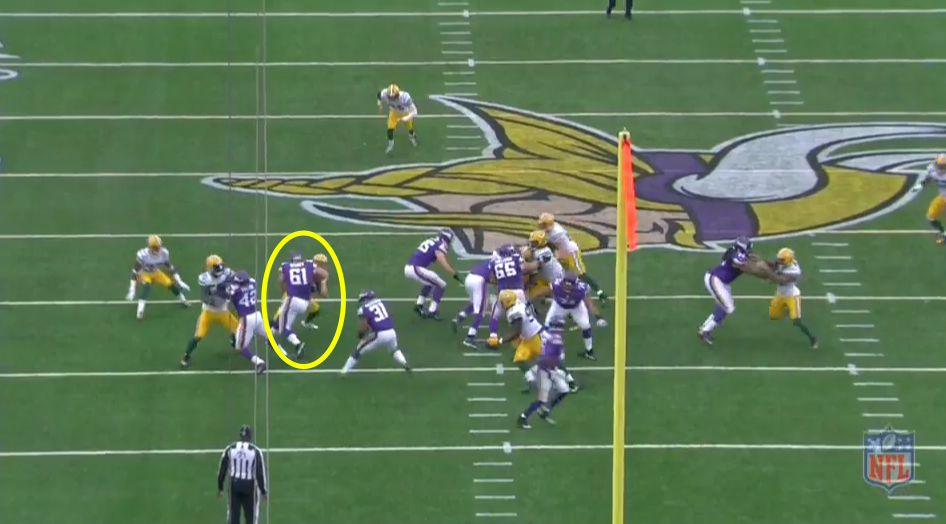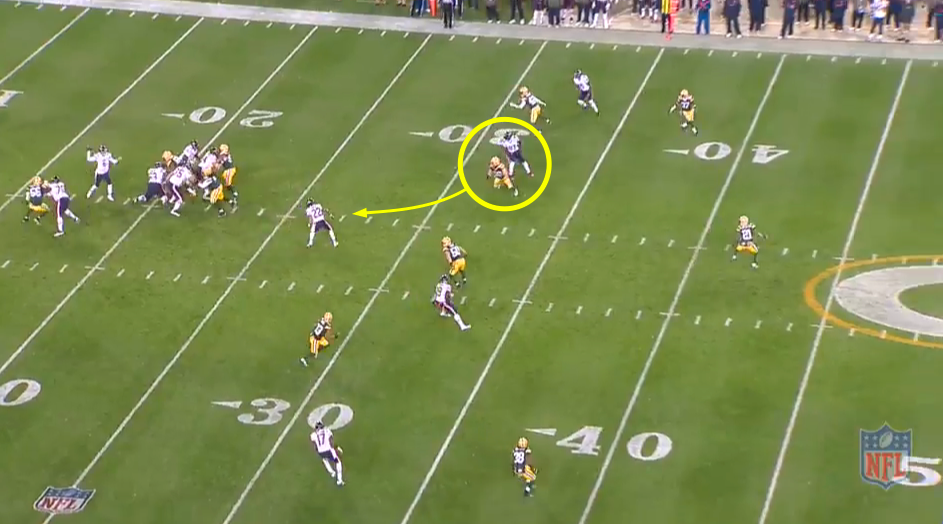Film Room: Packers' Clay Matthews is a perfect fit at inside linebacker
Heading into their Week 9 bye, the Green Bay Packers allowed a league-high 153.5 rushing yards per game.
The defensive line could not stay in its gaps, the shoulders of the linemen constantly turned sideways. The linebackers could not stack and shed blocks. The secondary missed tackles. All of the problems pinnacled when, in Week 8, against the New Orleans Saints, the defense allowed 193 yards rushing in a blowout loss.
Idle in Green Bay after, the Packers coaches had to find a resolution fast. They looked at the inside linebacker position, their weakest on the defense, and turned to Clay Matthews to make it a strength.
Matthews was a versatile outside linebacker who had played all over the line of scrimmage in recent years and had experience in dropping into coverage as well. He was also athletic and instinctive, so odds were against him being another liability at inside linebacker. To be safe and to use him to his strengths, they decided to play him at inside linebacker in base and nickel packages, then slide him to outside linebacker, his natural position, or defensive end in obvious passing downs.
In Week 10, facing the division rival Chicago Bears, the Packers defense stifled the same rushing attack that ran for 235 yards against them in Week 4. Matthews, in particular, made a difference leading with fundamentally sound and aggressive backfield reads.
On first-and-10 late in the first quarter, Bears running back Matt Forte took a carry straight into the teeth of the defense when Matthews attacked the line of scrimmage. Matthews suddenly stopped and watched the running back.
The running back planted his feet and jump-cut to his left, then squared his shoulders and spun outside, past a Packers outside linebacker.

Matthews, meanwhile, hopped to his right, past a right guard climbing to the second level, then a left tackle doing the same. The left tackle extended his left arm to clip Matthews as he passed by, but Matthews swatted the arm away and hustled to the line of scrimmage, where he surfed on to Forte’s head and shoulders, dropping him onto his back for no gain.
By the end of the game, the Packers allowed 55 yards rushing to the Bears.
Their otherworldly disciplined play continued into Week 11 against the Philadelphia Eagles, who ran for a mere 109 yards.
Then, a week later, the defense held the Minnesota Vikings to 112 yards on the ground, more than 30 coming from the quarterback on forced scrambles. On one play, Matthews single-handedly blew up the Vikings’ running game.
It was first-and-10 when Matthews read run and attacked downhill. He saw the VIkings run a power play with the right guard pulling from the back side, directly at him. The running back followed the right guard.
But when the guard pulled past the left tackle, outside the tight end, into the D-gap, Matthews bent his knees and leaned forward. His right shoulder collided with the guard’s right shoulder. Because his pad level was lower, he hammered the guard back and leaned his helmet into the C-gap.

Matthews’ peek inside startled the running back and made him second guess hitting the hole. The running back chopped his feet and stuttered outside, sandwiching himself in between the pulling guard and fullback. Matthews shed the block and reached out with his left arm to pull on the back of the running back’s jersey and dragged him down.
Since Matthews was moved to part-time inside linebacker, the Packers’ allowed rushing yards per game average has declined to 136.7 yards, third-most in the NFL. They have slowly improved in slowing rushing attacks down and, surprisingly, have also found out that Matthews is capable of expanded responsibilities in coverage.
Matthews’ aforementioned athleticism and instincts have enabled him to catch on quickly. He’s learned to shuffle his feet to the appropriate depth as he passes off crossers and curl-route runners and scans the field for other threats. He’s also able to keep his eyes on the quarterback and react instantly to their throws. Here’s an example from the same Week 10 game against the Bears.
Early in the third quarter, the Packers dialed Cover 3. Cover 3 is a zone coverage that has four underneath and three deep defenders.
From inside linebacker, Matthews shuffled his feet to his right, where a tight end ran a hook route. By shuffling his feet he stayed in front of the tight end and, simultaneously, kept his eyes in the backfield to read the running back who released out of the backfield and the quarterback’s upfield shoulder.

When the quarterback took his left hand off the ball to unwind it from his hip up to his ear, Matthews ran forward, downhill, toward the running back. Then he bearhugged the running back after a seven-yard gain.
Matthews’ awareness has helped him avoid being targeted by quarterbacks. He’s also shown that he’s not only capable of dropping to a landmark but also rerouting tight ends and playing within the structure of complex coverages. Here’s another example, this one from Week 12 against the Vikings.
On first down, the Packers played Cover 4 or what’s also known as Quarters. Quarters is a two-deep coverage that relies on the safeties to read run first, then pass, with an eye on the No. 2 threat from the sideline. Simply put: If the No. 2 threat, often a slot receiver or tight end, doesn’t block and runs vertically or breaks on a deep outside route, the safety is responsible for covering over the top. Underneath, linebackers or nickel cornerbacks will play zone coverage and run with the No. 2 threat until a certain distance, often eight yards, then pass him off to the safety and look for other threats in their zone.
Matthews bent his knees and shot out his arms to jam a Vikings tight end. He rerouted the tight end and funneled him in between the hashes, toward the deep strong safety. The quarterback looked in the tight end’s direction and soon looked away.

Matthews shuffled his feet for five yards with the tight end up the seam, with his back turned to the sideline, and opened his hips to face the line of scrimmage while keeping an eye on the quarterback and a crosser coming from the opposite side of the field. As he waited for the crosser, he shuffled his feet to his right to stay ahead.
The quarterback, meanwhile, was under duress and escaped from the pocket, forced to run for eight yards.
With his athleticism and instincts in pass coverage and his disciplined aggression in run defense, Matthews is a perfect fit at part-time inside linebacker for the Packers this season. He solves their playmaking woes at the position all at once, while still contributing as a pass rusher on passing downs.